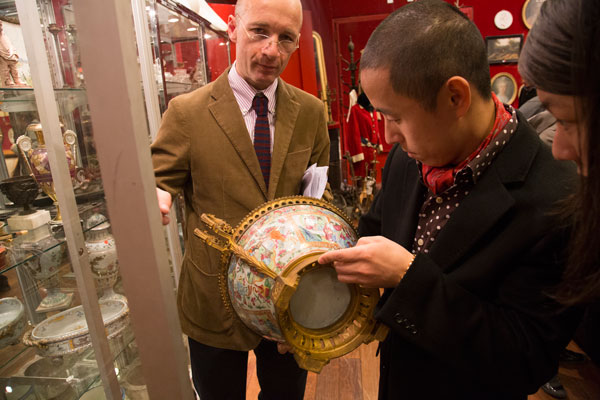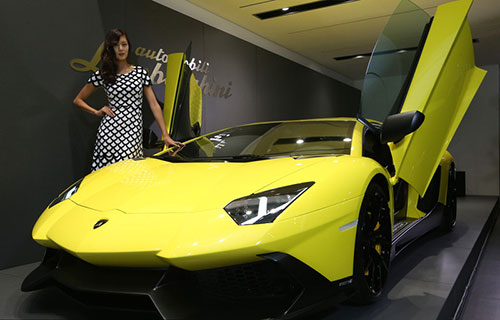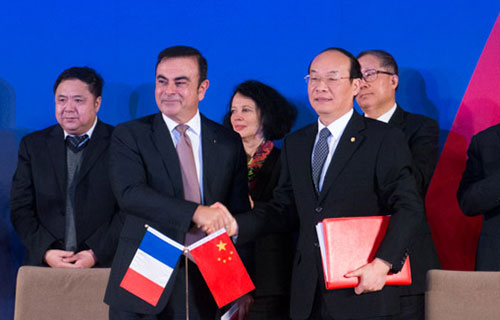

|
 A Chinese examines a porcelain vase at one of the oldest French auction houses, Drouot. Li Xiang / China Daily |
Bubble issues
The sharp rise in prices of Chinese art, both at home and in international art markets, driven by deep-pocketed Chinese buyers, has prompted several experts to link it to the Japanese-driven impressionist art bubble of the late 1980s.
Dutch painter Vincent Van Gogh's artwork Sunflowers was bought by a Japanese institution in 1987 at a record price of $39 million, which also signaled the height of Japanese economic power. Bubble fears were stoked and proved right later after impressionist art prices collapsed when the Japanese economy tanked. Experts feel that the buying frenzy unleashed by Chinese investors could trigger potential bubbles in the European art market.
"Many of my Chinese clients were those who used to buy artworks for 1,000 or 2,000 euros at the flea markets," says Philippe Delalande, a leading global expert on Asian art. "These same clients are now bidding for major artworks at big auction houses. It is a pretty amazing progression."
"It has become a game for them. The competition is becoming really high. Sometimes the price goes to a level that is quite dangerous."
William Chak, a well-known art dealer from Hong Kong who set a world record in 2005 by paying HK$115.4 million ($14.9 million) for an 18th-century porcelain vase from the Qing Dynasty, also has similar concerns.
"When I first came to Europe in the 1970s, looking for valuable pieces was a joyful experience. But now it has become a burden because the catalogues of auction houses are getting thicker and thicker and people are buying art pieces like shopping in the supermarkets," Chak says.
"What is worse is that the art market now seems very unhealthy in that it is full of people who consider art collection as a lucky dip and a quick way to make money."
Cheap imitations of Chinese art have also started to flow from China to the European markets, where they become pricy art pieces that are later resold to wealthy Chinese buyers.
"My concern is that the inflow of fakes will dilute the overall quality of the European market and drive down prices," says Wang Yudong, an art expert and general manager of Beijing Gehua Art Co, a State-owned firm and local partner of global auction house Sotheby's.
"If this becomes a trend, it will hurt the authenticity of the European market and it will be the collectors who will eat the bitter fruits in the end."
But some experts feel it is still too early to say if the market has peaked because the number of high-quality Chinese artworks is dwindling in Europe, something that could trigger more price rises.
"The market is living on the existing pieces, the number of which is decreasing because many of them are going to Asia," Delalande says. "The scarcity of high-quality works means that the price will continue to rise while there will be more money and stronger demand from the rich Chinese buyers."
Although New York regained its position from Beijing as the leading global city in terms of art sales last year, many experts feel China will soon replace the US and Europe as the world's art trading center, given the size of its domestic sales and the international significance of its buyers.
 Lamborghini launches Aventador LP 720-4 50° Anniversario
Lamborghini launches Aventador LP 720-4 50° Anniversario
 Dongfeng Renault expects 1st China-made Renault SUV in H1 2016
Dongfeng Renault expects 1st China-made Renault SUV in H1 2016